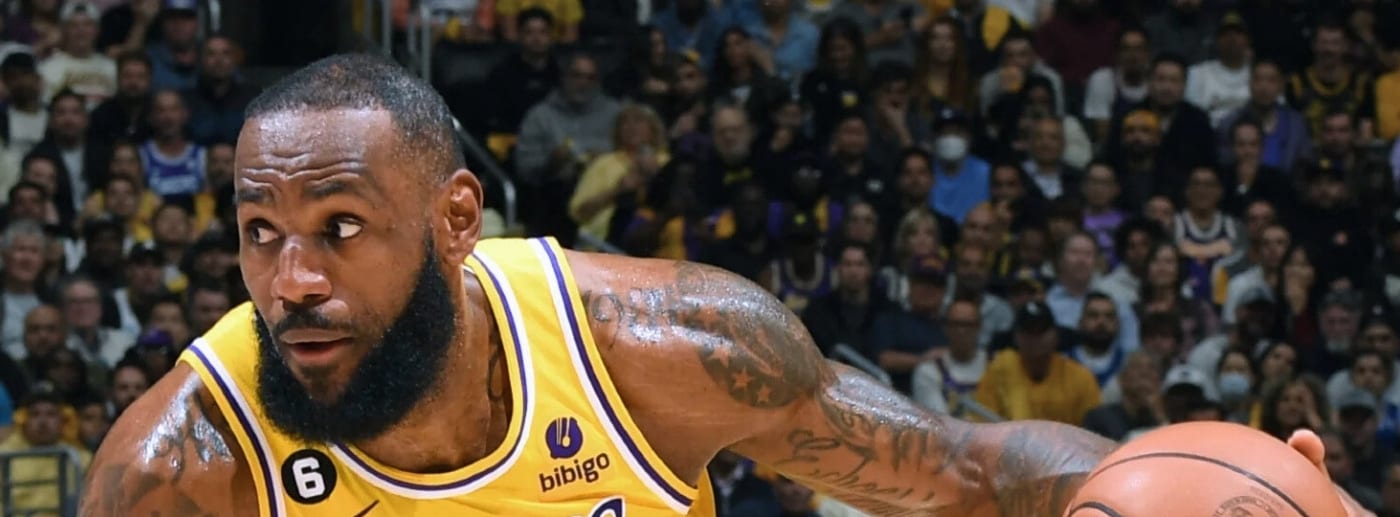
File photo: LeBron James #6 of the Los Angeles Lakers. (Photo: Thearon W. Henderson / Getty Images)
When even the most durable body in sports hits pause.
There’s a short list of people you’d expect to be built for forever, and LeBron James has always been near the top.
Two decades of elite basketball. Over 1,500 games. The kind of longevity that sports scientists study. At 40, he’s still dunking, sprinting, and leading teams of players half his age, which makes his latest opponent all the more surprising: sciatica.
Not a rival player. Not a torn ligament. A nerve.
The body that beat everything… until it didn’t
LeBron’s career has been a masterclass in maintenance: sleep, recovery, nutrition, training precision down to the molecule. This is a man who reportedly invests millions each year in keeping his body ready.
So when the Los Angeles Lakers announced that he’d miss the start of his 23rd season because of sciatica, the collective reaction was less “Oh no” and more “Wait, even him?”
Because if it can happen to LeBron, the gold standard of human upkeep, it can happen to anyone who moves, lifts, bends, or just sits too long at a desk.
So, what actually is sciatica?
Sciatica happens when the sciatic nerve, the largest in the human body, gets pinched, inflamed, or irritated. It runs from the lower back through the glutes and down each leg, which means when it’s angry, you know it.
Symptoms can feel like a deep ache, a sharp burn, or even an electric jolt. They can flare up from overuse, tight muscles, herniated discs, or just time.
Roughly 40% of adults will experience it at some point, according to the Cleveland Clinic.
How pros recover (and how you can, too)
For someone like LeBron, treatment means the full playbook: rest, stretching, mobility work, massage, and yes, electrical stimulation therapy.
The goal is more than pain relief. It’s about resetting the nerve, retraining nearby muscles, and bringing the body back into proper balance before new tension patterns take over.
That’s the same principle behind HiDow’s TENS/EMS tools.
Watch: Sciatica relief with HiDow TENS/EMS
(2-minute video with Physical Therapist Terry Shultz)
Learn proper pad placement for lower-back and sciatic-nerve relief — the same muscle-reset techniques athletes use, simplified for home recovery.
Watch the full video on YouTubeOur devices use gentle electrical pulses to:
- Interrupt pain signals that travel along irritated nerves.
- Increase circulation to promote healing.
- Relax tense muscles that might be compressing those nerves in the first place.
Used regularly, it helps break the pain–tension cycle so your body can move the way it’s meant to.
SCIATICA RELIEF: PAD PLACEMENT
| If Pain Is: High — Lower Back / Glute | |
|---|---|
| Pad 1 Location | Just above the sore spot (lower back, avoiding the spine) |
| Pad 2 Location | Upper glute (same side) |
| If Pain Is: Mid-Leg — Through the Thigh | |
|---|---|
| Pad 1 Location | Upper glute |
| Pad 2 Location | Back of the mid-thigh (hamstring line) |
| If Pain Is: Full Leg — Reaches Calf / Foot | |
|---|---|
| Note | Use 4 pads / 2 channels |
| Pad 1 (Channel 1) | Upper glute & mid-thigh |
| Pad 2 (Channel 2) | Below the knee (back) & upper calf |
Session Settings
- Duration: 15–20 minutes, 1–2 times daily.
- Intensity: Choose a strong, comfortable pulsing sensation (never sharp).
- Key: Consistency beats power. Use it steadily every day for the best results.
- Pro Tip: Use an AcuBelt or Pro Belt around the lower back/glute to target the nerve’s origin, especially when paired with pads lower down the leg.
The tricky part: the comeback
Most cases of sciatica improve within a few weeks, but the hardest part is usually the waiting—letting recovery happen on its own timeline.
Push too soon and the body compensates. Change your gait a little to protect one area, and another picks up the strain. That’s how one injury becomes three.
LeBron’s staff knows this better than anyone. But the same truth applies off-court: the fastest recovery is the one you don’t rush.
The real takeaway
LeBron’s sciatica is more than a headline. It’s proof that even the strongest, most disciplined bodies have limits. Pain doesn’t care about genetics, training budgets, or shoe deals.
But recovery? That part is in our hands.
With the right care, the right pacing, and the right tools, you don’t have to play in the NBA to treat your body like it matters.
Because when it comes to pain, even the King has to listen.

Related Stories
When Courage Takes Flight: Lessons From a Women’s Skydiving Record Attempt
Photo by Taylor Buffington (T-Buff) We went to Eloy, Arizona on a mission — to...
Nov
Sciatica: 1, LeBron: 0 (For Now)
File photo: LeBron James #6 of the Los Angeles Lakers. (Photo: Thearon W. Henderson /...
Oct
Pickleball vs. Tennis: The Science of Recovery
For years, tennis was the stand-in for movement: endurance, coordination, and power all at once....
Oct
5 Ways to Support Bone Strength with HiDow
World Osteoporosis Day (October 20) October 20 is World Osteoporosis Day, and chances are, you’ve...
Oct
FDA-Cleared Is a Flex. Here’s Why.
Pulling Back the Curtain You’ve seen it on boxes, on websites, in ads: FDA-cleared. It...
Sep
This Is Fibro. This Is Larry.
September is Pain Awareness Month. And we’re not here to give you medical definitions or...
Sep